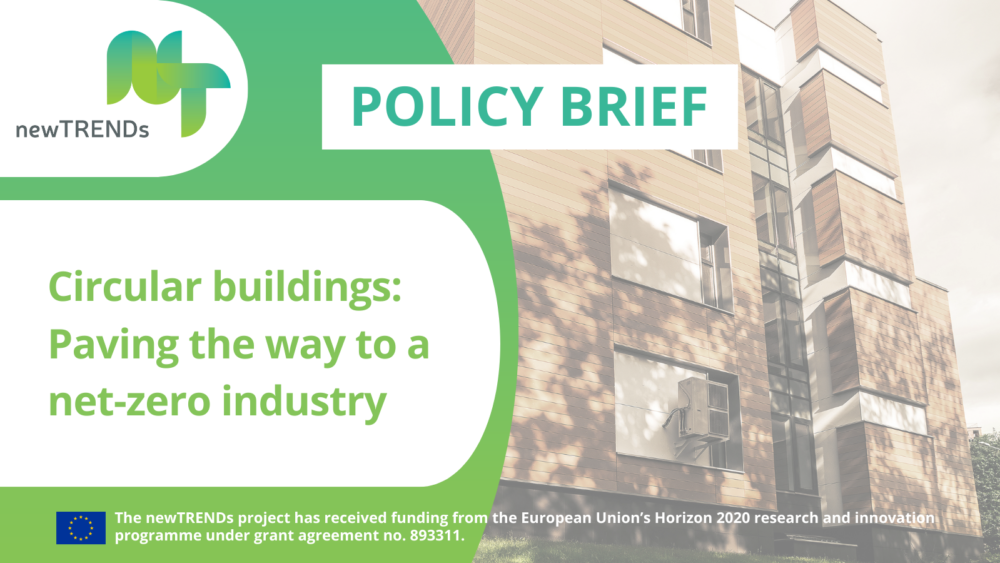Why do we need the circular economy for a deep decarbonisation of the industry?
In 2021, the industry sector was responsible for about 22% of carbon emissions in the European Union (EEA, 2021). Available technologies are not sufficient for a deep decarbonisation of this sector (Fleiter et al., 2019). Thus, material-based strategies grouped under the umbrella of a circular economy gain momentum in the political debate (European Commission, 2019). These strategies can contribute to reduce the material demand by using materials and products efficiently and repeatedly avoiding adverse impacts, while enabling further economic growth.
In the context of industry decarbonisation, circularity addresses material production in the hard-to-abate sectors, with the potential to reduce carbon emissions. Moreover, circularity can reduce the demand for secondary energy carriers required for the decarbonisation of these sectors and thus, the overall transformation costs (IEA, 2019).
Buildings are one of the main demanders for energy-intensive materials such as steel and concrete (including the precursors cement and clinker), responsible for a large share of carbon emissions in the industry sector (Lotz et al. 2022a). Furthermore, several studies showed that a circular economy can contribute significantly to reduce the demand for building materials (Circle Economy 2022; Hertwich et al. 2020; Le Den et al. 2020; Material Economics 2018). Using the modelling approach and the data basis developed within the newTRENDs project, a reference case for the steel and concrete demand in buildings until 2050 were modelled. If building use and construction method do not change, the material demand will increase and drive industry emissions. It is therefore crucial to reduce the prospective demand for building materials to achieve the European climate goals.
KEY MESSAGES
- A circular economy can contribute significantly to reduce carbon emissions and achieve the climate targets in the hard-to-abate sectors
- Buildings are a key value chain related to a high demand for energy-intensive materials and characterised by high circularity potentials
- Within the EU-funded project newTRENDs, a modelling approach and data basis were developed and applied, that quantify the contribution of circular buildings to the industry decarbonisation
- Besides the cycling of materials, actions addressing building design and use can reduce steel and cement demand for buildings by up to 38% respectively 26% in 2050
- The current EU policy mix is not sufficient to exploit these material demand emissions reduction potentials
- newTRENDs recommends to focus on 5 key points to improve the policy mix, highlighting the central role of green public procurement in the early stage of a circular economy:
- A life cycle perspective: The policy mix should address all stages of a building’s lifecycle well-balanced and without contradictions.
- Broaden the scope: An understanding of the circular economy beyond the cycling of materials is necessary to fully exploit its potentials.
- Push and pull: The instruments should support both – a market push and a market pull, to equip the EU market for a circular economy.
- From voluntary to obligatory: Instruments such as green public procurement can be used to roll out obligatory requirements to all consumers.
- Stay focused: Product-specific requirements are necessary to meet the special requirements for buildings (affordability, liveability and sustainability).



Comments are closed.